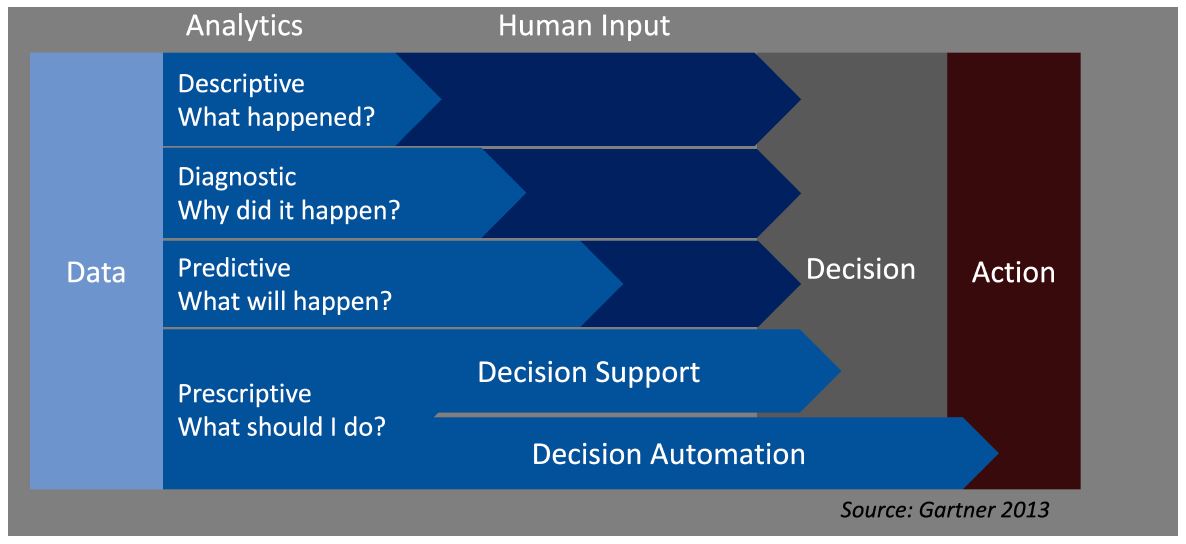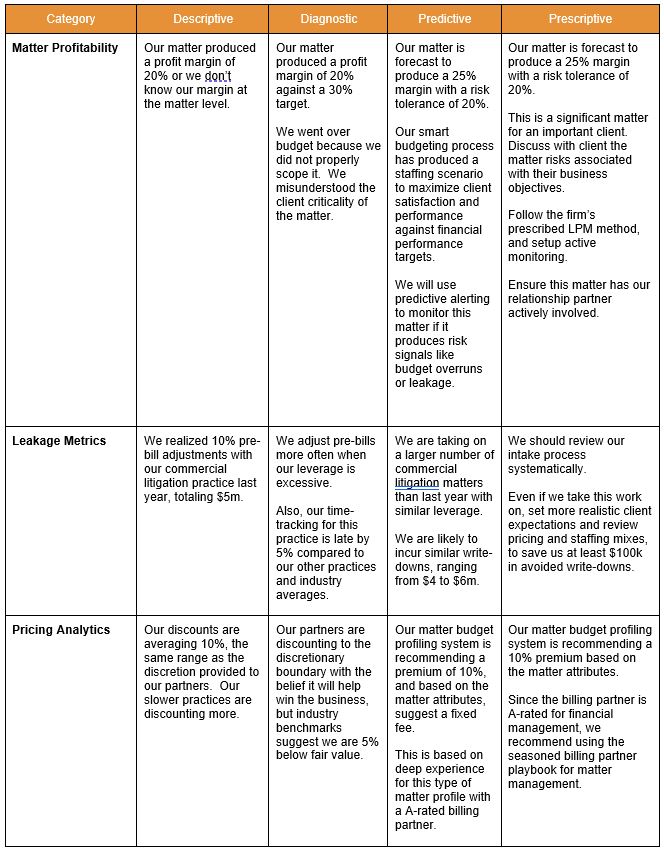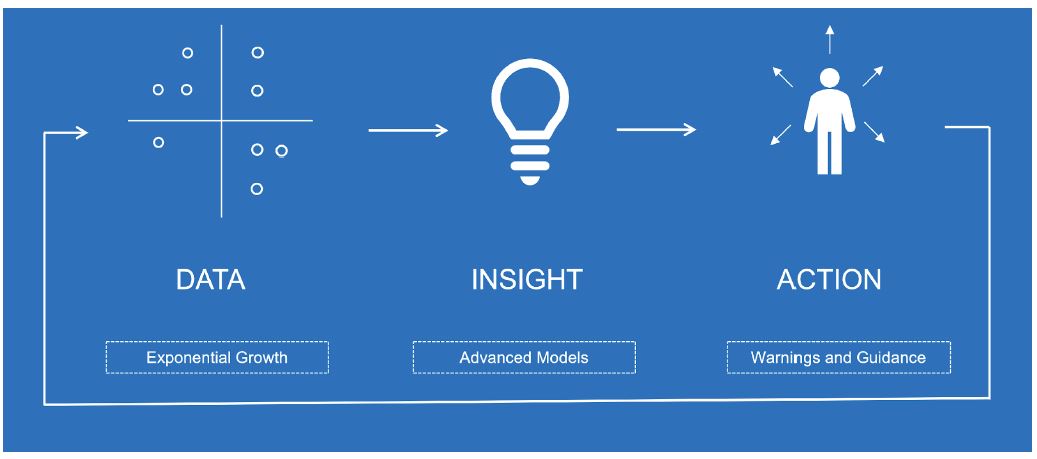If the pandemic teaches us nothing else, it's that firms need the next wave of data-driven analytics that result in faster, better-informed decision-making
In January, I conducted a law firm sentiment survey that asked how firms performed in 2019 and whether 2020 would bring more or less favorable results. The respondents indicated a very bullish 2020 forecast, with more than 80% of firms reporting excellent 2019 results with an anticipated stronger 2020. Not surprisingly, an identical survey conducted in March muted those projections, with nearly the same percentage now expecting a down 2020.
If the pandemic teaches us nothing else, the need for faster, better-informed decision-making will be characteristic of successful firms in the recovery. And deploying these data-driven capabilities will be a crucial ingredient for success in the next wave.
The Next Legal Analytics Wave is Coming
Data-driven decision-making and analytics have been an increasingly important idea for law firms over the past decade. Many firms began a meaningful journey toward producing profit metrics, conducting real-time reporting, and building performance workstreams. What changes should we expect for the next decade, in light of the pandemic and beyond?
The priorities for data follow business needs. Thus, the logical starting point for the next wave begins by reviewing firm financial trends that may come about due to the effects of the crisis, such as:
-
-
- Redefinition of law firm financial performance — Economic cycles invite reflection about the definition of performance. Through the years, firms have evolved their thinking on topics like profitability and partner performance, gradually, but not entirely, moving away from pure revenue-oriented models to those based on net contribution.
- Expanded roles related to managing firm performance — Over the past decade, we saw pricing and legal project management roles emerge, and more recently, this expanded to include innovation and value officers. Many law firms are also embracing legal operations concepts and structures, somewhat parallel to their clients. These roles will further develop. Along with these developments, expect to see data officers and data scientists emerge, especially as it relates to helping firms deliver improved profitability. The role of a profit leader (quite different from CFO) may emerge to lead pricing initiatives, manage profit analytic projects, monitor profitability, educate and train lawyers, and help define performance metrics.
- Evolution of new performance metrics create new incentives — New metrics are a topic that frequently surfaces during crises. Are we using the right metrics to inspire efficient work? The creation of more authentic measures of productivity and effectiveness is warranted. Imagine a composite metric that blends client satisfaction, matter profit margin, and lawyer contribution, as a more relevant performance measure for the coming decade.
-
These trends and others will increase the need for an enhanced data financial framework. They will build on the model described below.
The workflow illustrated below plots the three steps most firms use to manipulate data to support general operations: i) data aggregation; ii) insight generation; and iii) resulting actions taken. In the next wave, data quantities will be exponentially larger, decision models will become more sophisticated, and the importance of follow-on action will be paramount. Firms that are more adept at scaling this analytical workflow will reap the most pronounced market rewards.
Imagine, for example, automating a smart budget process that generates a matter budget by designated profile, optimized for profitability, and calibrated to maximize client satisfaction. The profile would also recommend staffing models while factoring in resource availability and expertise. This overall process would happen in seconds, rather than hours or days, and the results would be much more precise and targeted.
As firms become more digitized, you can envision how these pieces become more dynamic, integrated, and operable in real-time. You might think of this as a performance data operating system, serving as your firm’s nervous system. Additional system characteristics would include: i) greater agility; ii) more forward-looking data insights; iii) tighter coupling to action; and iv) broader firm operating scope.
Performance Data Operating System: Key Applications
Key uses for the performance data operating system will evolve out of current firm activities, while new ones may emerge, such as:
-
-
- data insights that support upstream profitability, pricing, cash leakage management, matter risk mitigation, and cash conversion;
- smart pricing and more rapid deployment of alternative fee arrangements based on knowing your underlying costs with precision;
- automated matter risk, budgeting, and profiling systems;
- predictions on matter outcomes, matter profitability, client attrition, client needs, talent success rates, etc.;
- software-guided client compliance and outside counsel guidelines systems;
- use of industry matter standards and new client metrics; and
- outcome scenarios for budgeting and setting client expectations.
-
Data Design Must Drive Action: Living Analytics
A report sitting on the shelf or only known to one analyst is worth substantially less than data guiding the firm on client management, pricing, profitability, matter management, or case assessment. Systematic applications of data maximize its utility.
Today, most data experts classify data insights into four groupings: descriptive, diagnostic, predictive, and prescriptive, as illustrated in the chart below published by Gartner Research.

Applying the above framework to profit metrics, one can make projections about metric design and anticipated uses that may change as you push further into decision automation. For most law firms, decision automation remains an aspirational goal. Right now, the greater focus rests on diagnostic metrics and predictive analytics. In the table below, I list several profit metrics and how you might think of them by the phases in the continuum.
Living Profit Analytics for Law Firms

Financial Data Strategy & Your Prioritization Framework
All data projects struggle with basic economic constraints: many opportunities competing for limited resources. This premise was true before the pandemic crisis and will be more constrained immediately afterward.
Below are considerations for law firms that I adapted, and they serve as a prioritization framework to inform your overall strategy:
-
-
- How valuable is the data to your firm and clients? How do you measure its impact and the return of value?
- What is the action rate of your data? Do you act on the insights provided? To what extent and with what result?
- What is the depreciation rate of your data? Does it provide client or firm insight that rapidly becomes stale? Can your data be aggregated, creating network effects and competitive barriers?
- How unique is the value of data to your clients? The more unique to your firm in legal service delivery, the more potent and differentiated it becomes.
- How easy is it for competitors to imitate your data strategy and its execution? Are there any competitive moats or advantages gotten by this process?
-
Even as law firm budgets likely remain tight throughout 2020, it is imperative to plan and begin your steps for your accelerated data strategy.
Conclusion
Law firms are presently experiencing their third economic crisis in two decades. Each of these cycles has provided lessons about competitive strategy; and, no doubt, the current economic cycle will present lessons of its own. Leaders must make vital decisions today while preparing for the future.
Your approach to data will be a central ingredient to your firm’s future success, especially if applied to your clients’ most pressing needs. As I’ve described above, this structure for data can provide context, help set priorities, and be a guidepost for planning and successful post-recovery execution.







